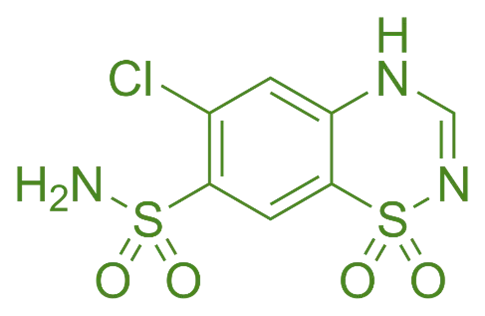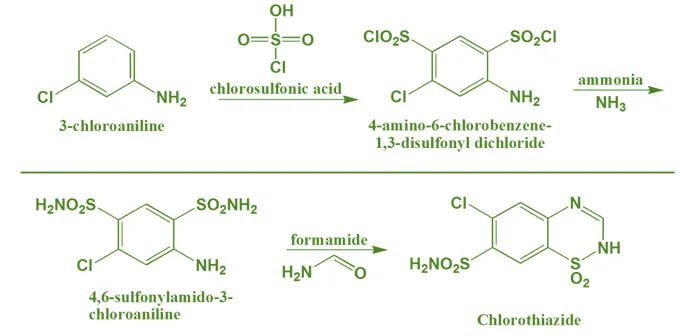Chlorthiazide is a thiazide diuretic used to treat hypertension and edema by promoting sodium and water excretion through the kidneys.
Structure of Chlorthiazide
- Chlorthiazide is a sulfonamide derivative belonging to the thiazide diuretic class, characterized by a benzothiadiazine structure with chlorine substituents.
- Chemical Formula: C₇H₇ClN₃O₄S₂

Mode of Action
- Thiazide Receptor Blocking: Inhibits the sodium-chloride symporter in the distal convoluted tubule of the nephron.
- Sodium and Chloride Excretion: Promotes excretion of sodium and chloride ions, leading to increased water loss (diuresis).
- Potassium Loss: Causes increased excretion of potassium and hydrogen ions, potentially leading to hypokalemia and metabolic alkalosis.
Uses
- Hypertension: First-line therapy for essential hypertension by reducing blood volume and vascular resistance.
- Edema: Manages edema associated with congestive heart failure, liver cirrhosis, and renal disease.
- Nephrolithiasis Prevention: Helps prevent the formation of calcium-containing kidney stones.
- Heart Failure: Used as part of diuretic therapy to manage fluid retention.
Structure-Activity Relationship (SAR)
- Benzothiadiazine Core: Essential for thiazide diuretic activity by targeting the sodium-chloride symporter.
- Chlorine Substituents: Enhance binding affinity and potency by increasing lipophilicity and facilitating interaction with the transporter.
- Sulfonamide Group: Critical for inhibition of the sodium-chloride symporter; substitutions can affect potency and duration of action.
- Substituents on the Benzene Ring: Influence pharmacokinetics, including solubility and bioavailability.
Synthesis


